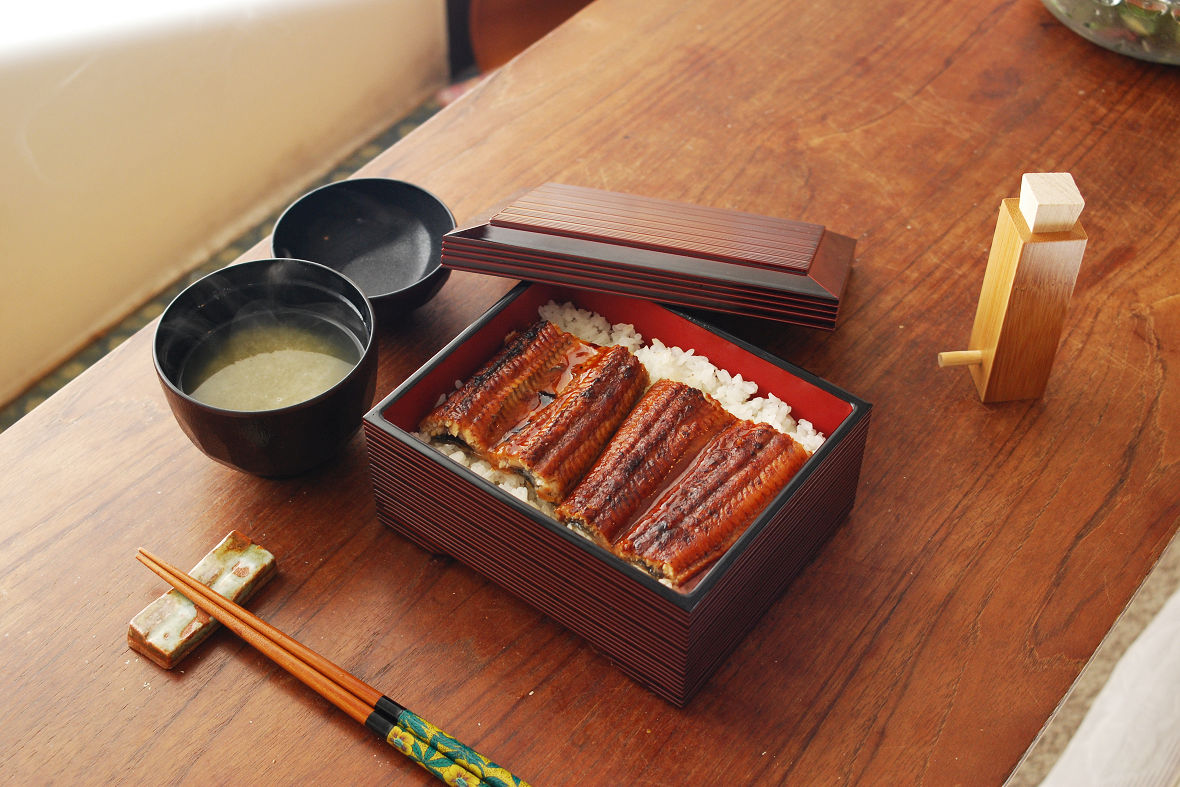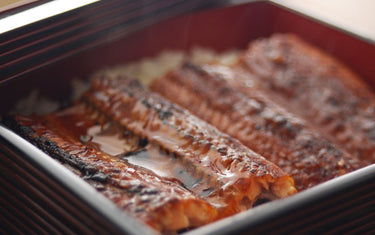In Japan, there is a custom of eating eels on a day of the ox (called “Ushinohi”).
Foreign people would wonder why, but there is a reason for this custom.
Today we are going to tell you the reason “why eels are eaten on a day of the ox”.
What is a “day of the ox”?

A day of the ox comes 4 times a year – during 18 to 19 days before the first day of spring, summer, autumn and winter. This originated from the Theory of Yin-Yang and the Five Elements in China.
As mentioned above, we have a day of the ox 4 times a year, and among those especially the midsummer day of the ox is highlighted because people tend to get sick in summer due to hot weather and they eat eels, which are nutritious and effective for recovering stamina. Other than eating eels, people soak in Ushiyu (hot water with peach leaves) or eat something starting with “U” including Uri (gourd), Umeboshi (pickled Japanese plum), Ushi (beef), and Uma (horse meat). This is because food starting with U are rich in nutrition and good for stamina.
A “day of the ox” is decided by assigning days according to Chinese zodiac and falls on between 18-19 days before the first day of spring, summer, autumn and winter. July 28th is the only midsummer day of ox in 2021. We may have it twice in some years.
Origin of the Custom

There are several explanations for why people started to eat eels on a day of the ox. The most famous one is that the custom was widespread by Gennai Hiraga, who was a renowned scholar and inventor in the Edo Period.
In those days, an eel restaurant suffered from poor sales in summer because eels were often eaten in winter, and they asked Gennai for help. He recommended advertising eels with a banner saying “Today is a day of the ox”. Then, the restaurant followed his advice and got thriving. Other eel restaurants did the same and it becomes a custom to eat eels on a day of the ox.
Why are eels good to eat in summer?

The most common Japanese eel dish is eel rice box (Una-juu).
Eels are rich in vitamins, minerals, and good fat. They are effective for recovering from fatigue and regaining stamina. As they are good to prevent summer heat fatigue, it is very reasonable that we eat eels in summer to restore energy.
However, the number of natural juvenile fish for eel cultivation has significantly decreased in recent years and they are endangered. Also, cultivation technology needs further development. This is why people replace eels with other food starting with “U” or grilled sardine or conger.
In summer people have less appetite, and it is important to have healthy meals with enough nutrition and water.
Summary
Now you know that the custom of eating eels on a day of the ox dates back to the Edo Period and it is actually effective to prevent summer heat.
You can enjoy Japanese style summer if you get related items such as Donju Jubako box and Sansho jar (Sansho is a must spice for eels). Let’s spend the midsummer day of ox with authentic Japanese style!


















